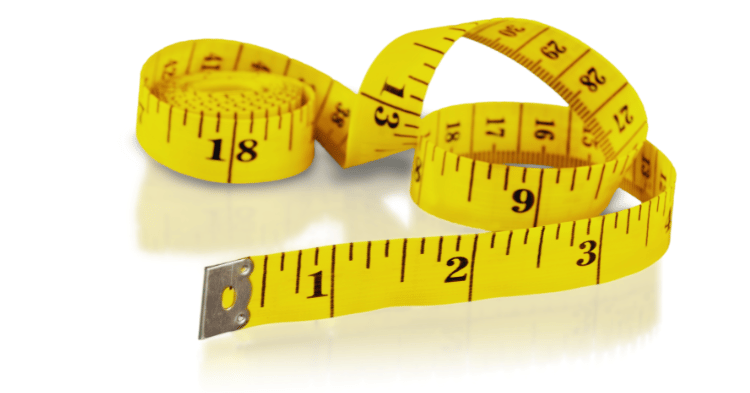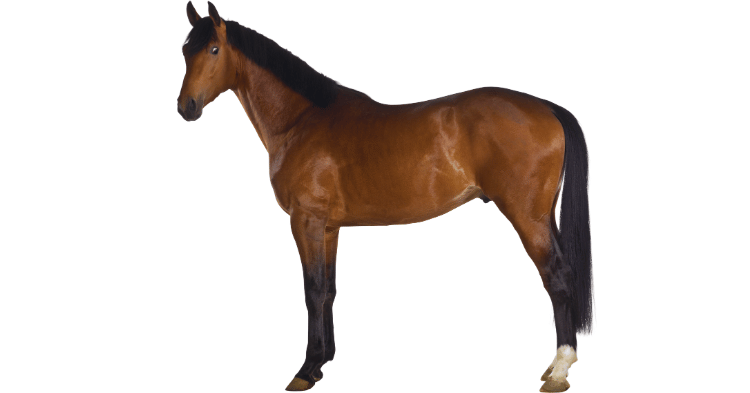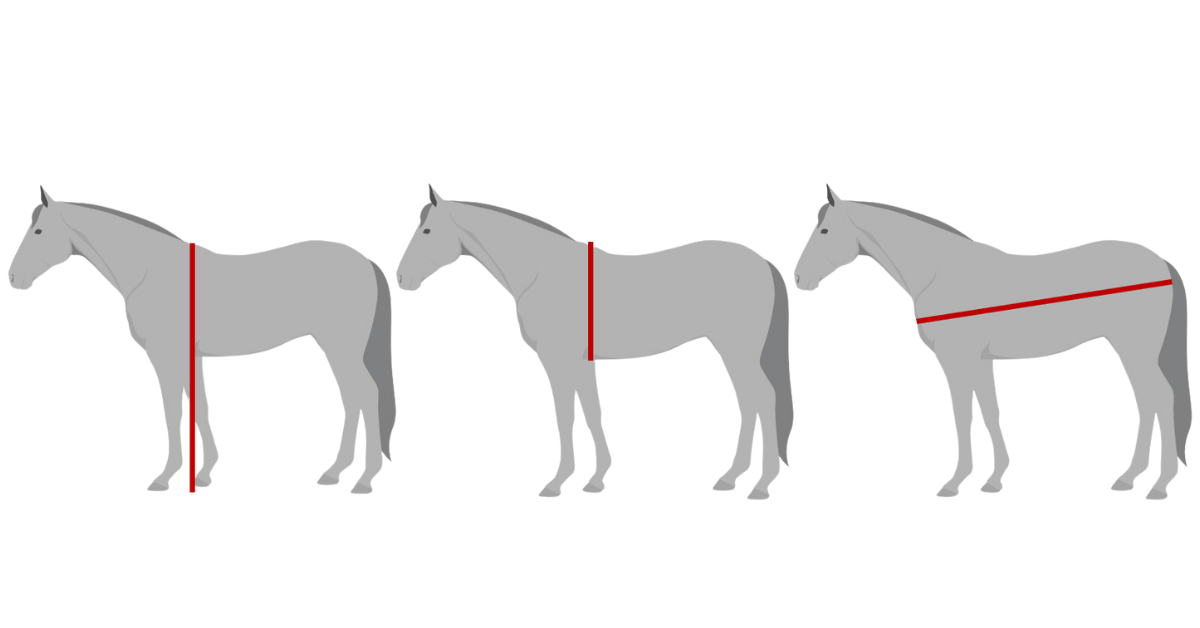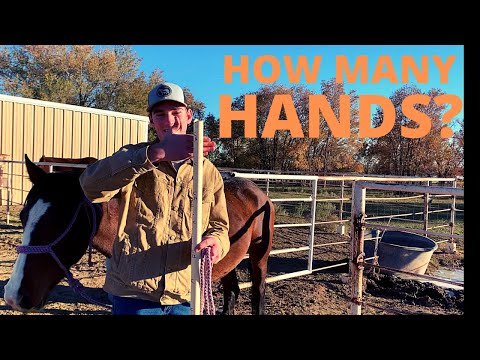Have you ever wondered how horses are measured ? It’s not as simple as grabbing a tape measure and jotting down a number. Horses have unique standards when it comes to both height and weight , and understanding these measurements is key to ensuring their health, performance, and even classification.
For height, the unit of measurement used is “hands,” with one hand equaling 4 inches. A horse’s height is measured from the ground to the highest point of its withers— the ridge where the neck meets the spine. But it doesn’t stop at height. Understanding a horse’s weight is equally crucial for determining proper feeding, saddle fit, and overall well-being.
While specialized scales are ideal, many owners use weight tapes or calculations to estimate. Accurate measurements allow us to unlock better care and understanding of these magnificent creatures, from miniature ponies to towering draft horses. Ready to measure up? Let’s dive in!
Understanding Horse Measurement
Understanding how horses are measured can be crucial for various reasons, ranging from proper health care to matching the horse to the right activities. In this section, we’ll delve into the basics of horse measurement, including the concept of “hands” and why knowing a horse’s height matters.
The Concept of “Hands”
When it comes to measuring a horse’s height, the term “hands” is universally used. One hand equals 4 inches (10 cm), and this method has been utilized for thousands of years, dating back to the Egyptians. This traditional unit of measurement derives from the approximate width of an adult male’s hand, making it a convenient method even before rulers and tape measures were available.
To measure a horse using “hands,” the measurement is taken from the ground to the highest point of the withers, which is the ridge between the shoulder blades. Decimals are used for partial measurements; for instance, 14.2 hands translates to 14 hands plus 2 inches, totaling 58 inches (BayEquest).
Here’s a simple conversion table:
| Hands | Inches | Centimeters |
|---|---|---|
| 1 | 4 | 10.16 |
| 14 | 56 | 142.24 |
| 14.2 | 58 | 147.32 |
| 16 | 64 | 162.56 |
Why Knowing a Horse’s Height Matters
Knowing a horse’s height is more than just a trivial detail; it has significant practical implications. Firstly, it influences the suitability of the horse for various activities. For athletic activities like jumping or racing, height can be a determining factor.
Additionally, a horse’s height plays a critical role in its health and care. Accurate height measurements are essential for determining the right nutrition requirements and balanced diet. Taller horses may require more feed and specific nutrients compared to their shorter counterparts. Furthermore, understanding the height is crucial for ensuring the correct fit of saddles, bridles, and other gear, reducing the risk of injury or discomfort (how to harness horse).
Height measurements also aid in medication dosage and health management. For example, accurately knowing a horse’s height can help in calculating the correct dosage of medications and supplements.
By grasping the concept of “hands” and the importance of height, you can better understand and meet the needs of your equine companion. For more information on factors affecting horse weight and overall health, make sure to read our section on Factors Influencing Horse Weight.
Methods for Measuring Horses
Accurate measurement of a horse’s weight and height is crucial. Here are two common methods to determine a horse’s weight.
Using a Weight Tape

A weight tape is a practical tool, yielding about 90% accuracy. This tape is especially effective when more precise tools like scales are not available (Mad Barn).
To use a weight tape, the tape is wrapped around the horse’s girth, just behind the front legs. This measurement estimates the horse’s weight based on an average proportional girth-to-weight ratio. It is essential to ensure the tape lies flat and snug against the horse to avoid errors.
Weight tapes are widely accessible and simple to use. However, they offer an estimate rather than an exact weight, making them suitable for routine checks and adjustments in diet or medication (Horse & Country TV).
Calculating Weight from Girth and Body Length
Another reliable method to estimate a horse’s weight involves measuring the horse’s heart girth and body length. This formulaic approach is particularly useful for horses where high precision is necessary, such as racehorses.
- Heart Girth: Measure the circumference of the horse’s girth just behind the front legs.
- Body Length: Measure from the point of the shoulder to the point of the buttock.
Applying these measurements allows you to estimate the horse’s weight using the following equations:
Imperial System (pounds)
[ \text{Weight (lb)} = \frac{ \text{Heart Girth (in)} \times \text{Heart Girth (in)} \times \text{Body Length (in)} }{ 330 } ]
Metric System (kilograms)
[ \text{Weight (kg)} = \frac{ \text{Heart Girth (cm)} \times \text{Heart Girth (cm)} \times \text{Body Length (cm)} }{ 11,880 } ]
For example, a horse with a heart girth of 75 inches and a body length of 72 inches would have an estimated weight of:
[ \frac{75 \times 75 \times 72}{330} \approx 1,227 \text{ lbs} ]
This method works seamlessly to provide a fairly accurate weight estimate for calculating nutritional intake or assessing appropriate medication dosage.
These techniques facilitate the consistent monitoring of a horse’s health, crucial for maintaining the ideal body condition. Armed with accurate measurements, horse owners and caretakers can make informed decisions about feeding practices, medical needs, and appropriate exercise routines. Regular measurements help in ensuring that horses stay healthy and well-adjusted to their environment. For more specific guidelines and methods, refer to our resource on tips for accurately measuring horse weight.
Importance of Accurate Horse Measurement

In the world of equine care, accurate measurement of a horse’s height and weight is paramount. These measurements influence various aspects of a horse’s health and wellbeing.
Nutrition Requirements and Balanced Diet
Understanding and recording a horse’s weight is vital for establishing proper nutrition requirements and formulating a balanced diet. Horses require specific amounts of nutrients based on their body weight, age, activity level, and overall health condition.
For instance, mature adult horses can weigh anywhere between 300 – 1,000 kg (650 – 2,200 lb) (Mad Barn). This range indicates that their dietary needs can vary widely. Proper weight monitoring helps in identifying any required adjustments in feeding plans to accommodate changes in weight. Regularly updated measurements ensure that the nutrition remains balanced, preventing underfeeding or overfeeding.
| Horse Weight (kg) | Average Hay Requirement (kg/day) |
|---|---|
| 300 | 7.5 – 9 |
| 500 | 12.5 – 15 |
| 800 | 20 – 24 |
Learn more about what horses eat and how to maintain a balanced diet for optimal health.
Medication Dosage and Effects
Accurate body weight measurement is equally crucial when it comes to administering medication. The amount of medication required by a horse is directly proportional to its weight. Inaccurate weight estimates can lead to significant issues – underestimating a horse’s weight may result in ineffective medication, while overestimation might cause harmful side effects.
For example, if a horse’s actual weight is 500 kg, but it is mistakenly estimated at 700 kg, the administered medication dose could be too high, leading to adverse reactions. Conversely, if the same horse is wrongly estimated at 400 kg, the medication might not provide the intended therapeutic effect.
| Horse Weight (kg) | Medication Dosage (mg) |
|---|---|
| 300 | 3000 |
| 500 | 5000 |
| 700 | 7000 |
Precise weight measurement ensures efficacy of treatments and minimizes the risk associated with incorrect dosing. Discover what vaccines horses need to keep them healthy and protected.
Maintaining a balanced diet and proper medication regime is part of comprehensive horse care. Understanding the specific needs based on accurate measurements enables better decision-making, leading to healthier and happier horses.
Factors Influencing Horse Weight
Understanding what influences a horse’s weight is essential for maintaining their overall health and wellbeing. Several factors, such as breed, age, genetics, and health conditions, play a significant role in determining a horse’s weight.
Breed, Age, and Genetics
Different horse breeds have varying weight ranges. For example, a Thoroughbred typically weighs between 450 and 500 kg, while a Shire horse’s weight can range from 700 to 1,200 kg (Horse & Country TV). Genetics play a crucial role in a horse’s size and weight, as certain breeds are naturally predisposed to be larger or smaller.
The age of a horse is also a determining factor for its weight. Horses at birth weigh around 100 to 150 pounds (45 to 68 kilograms) on average, with some variation depending on breed and gestation period. Most breeds reach their full height and optimal weight around four to five years of age, while draft horses and mixed breeds may continue growing until they are eight years old (BayEquest).
| Breed | Average Weight (kg) |
|---|---|
| Thoroughbred | 450–500 |
| Shire Horse | 700–1,200 |
| Average Horse | 300–1,000 |
Impact of Weight on Health
Monitoring a horse’s weight is crucial for its overall health. Being underweight or overweight can lead to various health issues that can impact the horse’s quality of life. Maintaining an appropriate weight ensures that horses have sufficient muscle tone and energy levels for their daily activities.
Nutrition requirement is directly linked to the weight of a horse. Different breeds and weights necessitate specific dietary needs to maintain optimal health. Accurate weight measurement helps in designing balanced diets that cater to these needs (what horses eat).
Additionally, knowing a horse’s weight is imperative when determining medication dosage to ensure effectiveness and avoid overdoses. The level of activity and the horse’s metabolism are also significant factors to consider when managing a horse’s weight (VetandTech).
Lastly, horse weight can range anywhere from 300–1,000 kg based on factors like breed, size, age, diet, and level of activity (Horse & Country TV). Therefore, regular weight monitoring is essential for maintaining the health and wellbeing of horses.
To learn more about some unique characteristics in various horse breeds and how they differ, check out our article on what horse is bigger than a Clydesdale.
Guidelines for Weight Management
Carrying Capacity and Load Limit
Understanding a horse’s carrying capacity is crucial for maintaining their health and preventing injuries. The general recommendation is that horses should not carry more than 20% of their body weight. This guideline includes both the tack and the rider. Exceeding this limit can contribute to muscle soreness and tightness, negatively impacting the horse’s overall well-being.
| Horse Weight (lbs) | Maximum Carrying Weight (lbs) |
|---|---|
| 900 | 180 |
| 1,000 | 200 |
| 1,100 | 220 |
| 1,200 | 240 |
Monitoring and Adjusting Weight as Needed
Consistently monitoring a horse’s weight is vital for their health management. Regularly weighing your horse and adjusting their diet and exercise regimen as necessary can prevent issues related to weight and ensure optimal performance.
- Regular Weighing: Utilize a weight tape or a scale if available. Regular check-ups will help in early detection of weight-related issues.
- Nutrition: Adjust the diet according to the horse’s weight and activity level. For information on feeding, visit our page on what horses eat.
- Exercise: Tailor the workout regime to maintain the ideal weight. Regular physical activity is essential for weight management.
- Veterinary Consultation: Regular check-ups with a vet to monitor weight can help adjust feed and exercise to match health needs. For more on maintaining health, read what vaccines do horses need.
Effective weight management can prevent a host of health issues and ensure your horse stays fit, healthy, and capable of performing their tasks efficiently. If you’re curious about unique characteristics in different horse breeds regarding height and weight, you can explore what horse is bigger than a Clydesdale.
For more tips and in-depth insights on horse care, visit our articles on how to harness horse and how high can horse jump.
Unique Characteristics in Horse Breeds
Horse breeds exhibit unique characteristics, particularly in terms of height and weight. Understanding these variations is essential for choosing the right horse for specific activities and for proper care.
Variation in Height and Weight
Horse height is commonly measured in “hands,” with one hand equaling four inches. The average horse height varies significantly by breed. Here is a breakdown of the average heights:
| Breed | Average Height (hands) | Average Height (inches) | Average Height (meters) |
|---|---|---|---|
| Shire | 17 – 19 | 68 – 76 | 1.73 – 1.93 |
| Thoroughbred | 15.2 – 17 | 62 – 68 | 1.57 – 1.73 |
| Arabian | 14.2 – 15.2 | 58 – 62 | 1.47 – 1.57 |
| Quarter Horse | 14.3 – 16 | 59 – 64 | 1.5 – 1.63 |
| Pony | up to 14.2 | up to 58 | up to 1.47 |
- The tallest breed is the Shire. The average Shire stands at 17 hands, but individuals can reach up to 19 hands.
- Ponies, in contrast, are typically under 14.2 hands. There are even specific categories like miniature horses, which can measure no more than 34 inches at the withers.
Noteworthy Records and Breed Differences
- The tallest recorded horse, Sampson, was a Shire measuring 21.2 hands (86 inches, 2.18 meters).
- Another notable Shire, Goliath, held the Guinness World Record for tallest living horse at 19 hands (76 inches, 1.93 meters).
Height and weight variations among horse breeds are critical for tasks like riding, showing, and work. For example, a Shire might be ideal for heavy farm work due to its size and strength, while an Arabian might excel in endurance racing due to its lighter build.
Breed differences also influence diet, exercise, and health care needs. Understanding these variations helps in how horses are measured and managed, ensuring they receive appropriate care.
For more insight on related topics, such as how fast horses can run or how high horses can jump, be sure to explore our other guides.
By recognizing these unique characteristics, horse owners can make informed decisions that cater to their specific needs and ensure their horses thrive in their respective roles.


